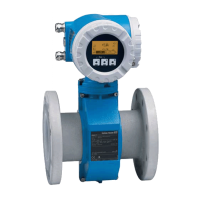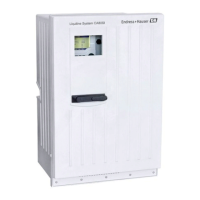Gammapilot FMG50
26 Endress+Hauser
Measured value resolution
1 µA
Influence of ambient
temperature
NaI (Tl) crystal
• Temperature range: –40 to +50 °C (–40 to +122 °F)
Influence of ambient temperature: +- 0.1%
• Temperature range: –40 to +80 °C (–40 to +176 °F)
Ambient temperature effect: –0.1 to +0.7 %
PVT scintillator (standard)
Temperature range: –40 to +60 °C (–40 to +140 °F)
Influence of ambient temperature: +- 0.5%, typical long-term stability < 1%/a
PVT scintillator (high-temperature version)
• Temperature range: +5 to +60 °C (41 to +140 °F)
Influence of ambient temperature: +- 0.5%, typical long-term stability < 1%/a
• Temperature range: –20 to +80 °C (–4 to +176 °F)
Influence of ambient temperature: +- 0.5%, typical long-term stability < 3%/a
Statistical fluctuation of the
radioactive decay
The radioactive decay of the radiation source is subject to statistical fluctuation. For this reason, the
pulse rate displayed fluctuates around its mean value. The standard deviation σ is an indicator of the
intensity of these fluctuations. It is calculated as follows:
σ = √I / √τ
Where:
• I is the pulse rate
• τ is the output damping (can be selected by the user), (device parameter: damping output)
Various confidence intervals can be calculated from the standard deviation. The 2σ confidence
interval is usually used for the planning of radiometric measuring systems. Approx. 95% of all pulse
rates displayed deviate by less than 2σ from the mean. The deviation is greater than 2σ in only about
5% of all cases.
A0018258
9 95% of all measured values are within the 2σ confidence interval.
In order to calculate the relative (%) statistical measured error, the standard deviation is divided by
the pulse rate:
2σ
rel
= 2σ / I = 2 / √ (I τ)
Example:
• I = 1000/s
• τ = 10 s
2σ
rel
= 0.02 = 2 %
As a general rule, the statistical signal fluctuation can be reduced by increasing the output
damping value (device parameter: damping output) or the radiation intensity.

